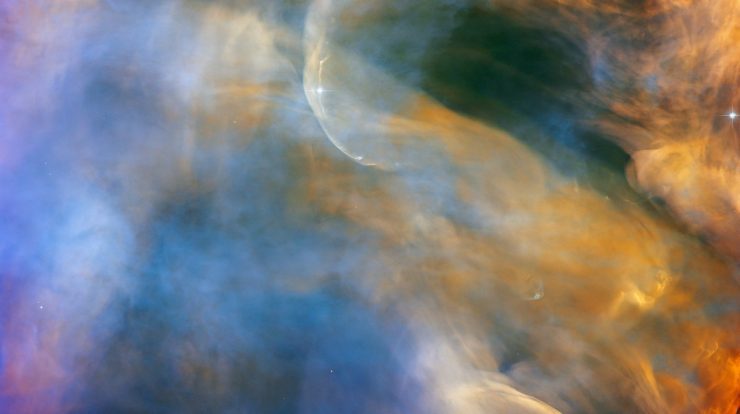
The Hubble Space Telescope, the “younger cousin” of the James Webb Super Telescope, continues to operate and makes unprecedented and astonishing recordings of our universe.
This week saw that the instrument NASA launched in 1990 is not very old and still important to science, Hubble released an image of a shimmering, colorful space structure and new data on the cosmic history of a giant star. (see below).
Photo released by NASA and the European Space Agency (see picture above) Shows the region of the Orion Nebula (star formation site) around the body Herbig Harrow HH 505, approx. 1000 light years from Earth.
The US space agency explains that these are areas of hazy associated with newborn stars. They form when stellar winds or gas jets from these stars create shock waves that collide with gas and dust at very high speeds.
NASA explains: “These expelled winds are shown as curvilinear structures at the top and bottom of this image. Their interaction with the large-scale influx of gas and dust from the nebula’s core distorts it into zigzag curves.”
According to NASA, the image was captured using the Hubble instrument that scans large swaths of space with tremendous accuracy of detail.
It was astronomers studying the properties of these high-energy streams who discovered them.
Betelgeuse: a red giant star
In the same week, after analyzing scientific data from Hubble and many other observatories, a group of astronomers also revealed that the red giant star Betelgeuseone of the largest stars ever known, produced a gigantic explosion About 400 billion times greater than emissions of the kind caused by our star, the Sun (See the figure below).
Artist’s personification of the explosion of the red giant Betelgeuse. Image: NASA, ESA and Elizabeth Wheatley (STScI)
NASA revealed in a statement that the star has lost a significant portion of its surface, expelling a giant mass several times the size of the Moon.
NASA explains that this is “Something unprecedented in the behavior of an ordinary star.” And that the red giant, which is located about 530 light-years away from Earth, is still slowly recovering from this “Disastrous transformation”.
“We’ve never seen such a massive mass from the surface of a star,” said Andrea Dupree, a scientist at the Harvard and Smithsonian Center for Astrophysics in Massachusetts, USA.
“It’s a completely new phenomenon that we can observe and resolve surface details directly using Hubble. We are watching the evolution of stars in real time.”
Betelgeuse is one of the brightest stars that can be seen in the night sky. The star is so large that if it replaced the Sun at the center of our solar system, its outer surface would extend beyond the orbit of Jupiter.
According to a NASA statement, the material was ejected in 2019which lasted for a few months and was easily noticeable even by amateur observers, as it moved millions of kilometers from the star, the ejected matter formed a dust cloud that obscured the star’s light here on Earth.
According to a NASA statement, the James Webb Super Telescope may now be able to detect material expelled by the giant titan, which continues to move away.
